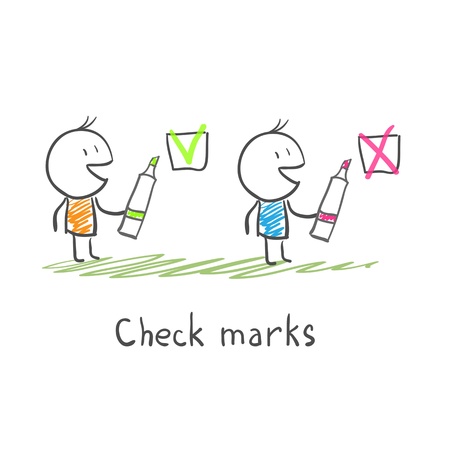3月10日最新SAT阅读考试真题火速来袭(五)
- 2018年03月12日13:10 来源:小站整理
- 参与(1) 阅读(8431)
敲黑板,划重点!这是一篇来自3月10日SAT阅读的考试真题,备考的宝宝们千万别做过这篇训练阅读的复习资料哦。
阅读本次篇章难度水平趋于正常,顺序类似于2017年8月北美出题。
阅读原文
Ancient magma plumbing found buried below moon'slargest dark spot
By Eric HandOct. 1, 2014 ,1:00 PM
Scientists have found a nearly squarepeg underneath a round hole—on the moon. Several kilometers below OceanusProcellarum, the largest dark spot on the moon’s near side, scientists havediscovered a giant rectangle thought to be the remnants of a geologicalplumbing system that spilled lava across the moon about 3.5 billion years ago.The features are similar to rift valleys on Earth—regions where the crust iscooling, contracting, and ripping apart. Their existence shows that the moon,early in its history, experienced tectonic and volcanic activity normallyassociated with much bigger planets.
“We’re realizingthat the early moon was a much more dynamic place than we thought,” saysJeffrey Andrews-Hanna, a planetary scientist at the Colorado School of Mines inGolden and lead author of a new study of the Procellarum’s geology. Thediscovery also casts doubt on the decades-old theory that the circularProcellarum region is a basin, or giant crater, created when a large asteroidslammed into the moon. “We don’t expect a basin rim to have corners,”Andrews-Hanna says.
The work isbased on data gathered by GRAIL (Gravity Recovery and Interior Laboratory), apair of NASA spacecraft that orbited the moon in 2012. Sensitive to tinyvariations in the gravitational tug of the moon, GRAIL mapped densityvariations below the surface (because regions of higher density produceslightly higher gravitational forces). Below known impact basins, GRAIL foundthe expected ringlike patterns, but underneath the Procellarum region, themysterious rectangle emerged. “It was a striking pattern that demanded anexplanation,” Andrews-Hanna says.
Scientistsalready know that the Procellarum region is rich in radioactive elements thatbillions of years ago would have produced excess heat. The study team theorizesthat as this region cooled, the rock would have cracked in geometricalpatterns, like honeycomb patterns seen on Earth in basalt formations, but on amuch larger scale. In a study published today in Nature, the researcherspropose that these cracks eventually grew into rift valleys, wheremagma from the moon’s mantle welled up and pushed apart blocks of crust. Lava spilledout and paved over the Oceanus Procellarum, creating the dark spot that is seentoday. The extra weight of this dense material would have caused the wholeregion to sink slightly and form the topographic low that has made theProcellarum seem like a basin.
With thediscovery, the moon joins Earth, Mars, and Venus as solar system bodies withmapped examples of rifting. There are also similar features near the south poleof Enceladus, the moon of Saturn that is spewing water into space from cracksin an ice shell.
Andrews-Hannaand colleagues have made a good case, says Herbert Frey, a planetary scientistat NASA’s Goddard Space Flight Center in Greenbelt, Maryland, even though thenewly described features are surprising. The moon is not big enough to have thesame strong convective cooling process that Earth has in its interior, heexplains, and ordinarily convection is one of the main mechanisms thought tolead to large-scale rifting. So just what caused the rifting remains unclear.“It just means the moon continues to surprise us,” he says. Frey adds that aremaining mystery is why the rectangular features were found only beneathOceanus Procellarum. Even if the rifting is explained by the excess radioactiveelements, there is still no definitive explanation for why only the near sideof the moon ended up enriched.
The discoverycould also be a death knell for the impact theory for Oceanus Procellarum, anidea first put forth in the early 1970s. A basin there would have been thelargest on the moon—larger than the South Pole–Aitken Basin—and second in thesolar system only to the Borealis Basin on Mars, which covers the planet’sentire northern hemisphere.
RyosukeNakamura, a researcher at the National Institute of Advanced Industrial Scienceand Technology in Tsukuba, Japan, is still not convinced that an impact can beruled out. In 2012, he and his colleagues published a paper in NatureGeosciencethat found compositional evidence for an impactwithin Procellarum—a type of pyroxene mineral that is found in other, knownimpact basins such as South Pole–Aitken and is associated with the melting orexcavation of mantle rock from an asteroid impact.
In response tothe current study, Nakamura says that the features in the southwestern cornerof the Procellarum region look to be circular rather than rectangular, andstill consistent with an impact. But Frey, who has long been skeptical of theimpact theory, says that the features are as clear as day, and not what you’dexpect underneath a basin. “That looks like a rectangle to me.”
文章概述
ancient magma plumbing found buried below moon’s largest dark point
Eric Hand
2014 American Association for Advanced Science
月球最大的圆形暗点oceanus procellarum下面找到了长方形的地貌,有冷却的岩浆等痕迹,很像地球的裂谷rift valley,证明月球很久以前也是有地址和岩浆活动的
OP这个暗点原来认为是陨石撞击造成的盆地,但是长方形地貌的发现反驳了这个idea,因为盆地不可能有棱角
NASA发了一对飞船GRAIL可以采集地貌细微的变化以及分析密度,提供了信息个hannah andrews这个科学家和她的团队。
OP这个暗点地区有大量的辐射粒子,可以释放大量的热量。在冷却之后,地壳会开裂,地幔中的岩浆会溢出来,然后慢慢的形成了暗点,多出来的岩浆冷却后加大了该地区的重量,导致下沉形成盆地状的地貌。
宇宙中有很多相似的情况,作者距离了一些,比如土星的卫星。
最后另一个科学家表扬了hannah团队的贡献,但是仍旧问题没解决,比如为什么却只有进地球的一侧出现了OP和长方形地貌,而月球其他的地方虽然有相似的条件却没有这种地貌。
考试题目
Ancient magma plumbing found buried below moon'slargest dark spot
By Eric HandOct. 1, 2014 ,1:00 PM
Scientists have found a nearly squarepeg underneath a round hole—on the moon. Several kilometers below OceanusProcellarum, the largest dark spot on the moon’s near side, scientists havediscovered a giant rectangle thought to be the remnants of a geologicalplumbing system that spilled lava across the moon about 3.5 billion years ago.The features are similar to rift valleys on Earth—regions where the crust iscooling, contracting, and ripping apart. Their existence shows that the moon,early in its history, experienced tectonic and volcanic activity normallyassociated with much bigger planets.
“We’re realizingthat the early moon was a much more dynamic place than we thought,” saysJeffrey Andrews-Hanna, a planetary scientist at the Colorado School of Mines inGolden and lead author of a new study of the Procellarum’s geology. Thediscovery also casts doubt on the decades-old theory that the circularProcellarum region is a basin, or giant crater, created when a large asteroidslammed into the moon. “We don’t expect a basin rim to have corners,”Andrews-Hanna says.
The work isbased on data gathered by GRAIL (Gravity Recovery and Interior Laboratory), apair of NASA spacecraft that orbited the moon in 2012. Sensitive to tinyvariations in the gravitational tug of the moon, GRAIL mapped densityvariations below the surface (because regions of higher density produceslightly higher gravitational forces). Below known impact basins, GRAIL foundthe expected ringlike patterns, but underneath the Procellarum region, themysterious rectangle emerged. “It was a striking pattern that demanded anexplanation,” Andrews-Hanna says.
Scientistsalready know that the Procellarum region is rich in radioactive elements thatbillions of years ago would have produced excess heat. The study team theorizesthat as this region cooled, the rock would have cracked in geometricalpatterns, like honeycomb patterns seen on Earth in basalt formations, but on amuch larger scale. In a study published today in Nature, the researcherspropose that these cracks eventually grew into rift valleys, wheremagma from the moon’s mantle welled up and pushed apart blocks of crust. Lava spilledout and paved over the Oceanus Procellarum, creating the dark spot that is seentoday. The extra weight of this dense material would have caused the wholeregion to sink slightly and form the topographic low that has made theProcellarum seem like a basin.
With thediscovery, the moon joins Earth, Mars, and Venus as solar system bodies withmapped examples of rifting. There are also similar features near the south poleof Enceladus, the moon of Saturn that is spewing water into space from cracksin an ice shell.
Andrews-Hannaand colleagues have made a good case, says Herbert Frey, a planetary scientistat NASA’s Goddard Space Flight Center in Greenbelt, Maryland, even though thenewly described features are surprising. The moon is not big enough to have thesame strong convective cooling process that Earth has in its interior, heexplains, and ordinarily convection is one of the main mechanisms thought tolead to large-scale rifting. So just what caused the rifting remains unclear.“It just means the moon continues to surprise us,” he says. Frey adds that aremaining mystery is why the rectangular features were found only beneathOceanus Procellarum. Even if the rifting is explained by the excess radioactiveelements, there is still no definitive explanation for why only the near sideof the moon ended up enriched.
The discoverycould also be a death knell for the impact theory for Oceanus Procellarum, anidea first put forth in the early 1970s. A basin there would have been thelargest on the moon—larger than the South Pole–Aitken Basin—and second in thesolar system only to the Borealis Basin on Mars, which covers the planet’sentire northern hemisphere.
RyosukeNakamura, a researcher at the National Institute of Advanced Industrial Scienceand Technology in Tsukuba, Japan, is still not convinced that an impact can beruled out. In 2012, he and his colleagues published a paper in NatureGeosciencethat found compositional evidence for an impactwithin Procellarum—a type of pyroxene mineral that is found in other, knownimpact basins such as South Pole–Aitken and is associated with the melting orexcavation of mantle rock from an asteroid impact.
In response tothe current study, Nakamura says that the features in the southwestern cornerof the Procellarum region look to be circular rather than rectangular, andstill consistent with an impact. But Frey, who has long been skeptical of theimpact theory, says that the features are as clear as day, and not what you’dexpect underneath a basin. “That looks like a rectangle to me.”
以上是小站为宝宝们整理出来的最新SAT阅读考试真题第一篇,稍后献上3月10日考试其它阅读真题,敬请期待哦。小站祝备考SAT的宝宝们取得理想成绩!小站会一直陪在宝宝们身边,加油~

























